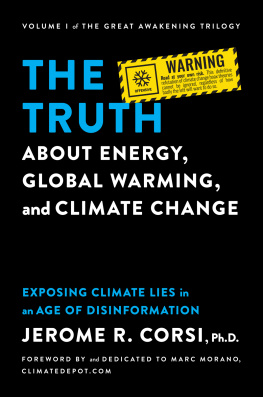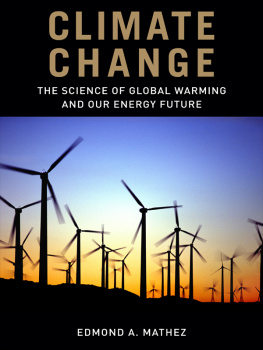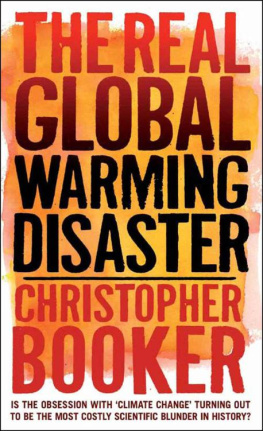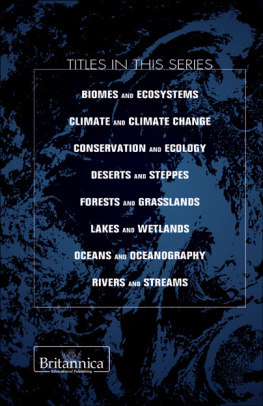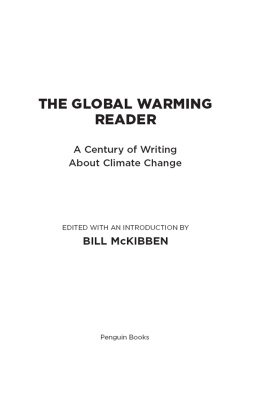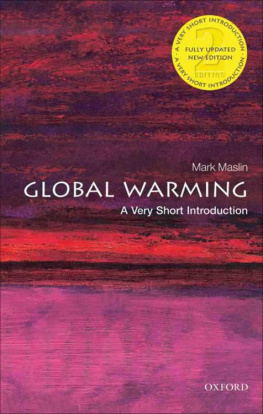
Beyond Global Warming
BEYOND
GLOBAL
WARMING
How Numerical Models
Revealed the Secrets of
Climate Change
Syukuro Manabe and
Anthony J. Broccoli
PRINCETON UNIVERSITY PRESS
Princeton and Oxford
Copyright 2020 by Princeton University Press
Published by Princeton University Press
41 William Street, Princeton, New Jersey 08540
6 Oxford Street, Woodstock, Oxfordshire OX20 1TR
press.princeton.edu
All Rights Reserved
ISBN 978-0-691-05886-3
ISBN (e-book) 978-0-691-18516-3
British Library Cataloging-in-Publication Data is available
Editorial: Jessica Yao and Arthur Werneck
Production Editorial: Jenny Wolkowicki
Text and jacket design: Chris Ferrante
Production: Jacqueline Poirier
Publicity: Matthew Taylor and Katie Lewis
Copyeditor: Maia Vaswani
This book has been composed in Minion Pro, Gotham, and Alternate Gothic
Printed on acid-free paper.
Printed in the United States of America
10 9 8 7 6 5 4 3 2 1
CONTENTS
ILLUSTRATIONS
Figures
Tables
Plates
PREFACE
There is no doubt that the composition of the atmosphere and the Earths climate have changed since the industrial revolution, with human activities as the predominant cause. The atmospheric concentration of carbon dioxide has increased by more than 40% since the preindustrial era, primarily from the combustion of fossil fuels for the production of energy. The global mean surface temperature, which has been relatively stable over 1000 years, has already increased by about 1C since the preindustrial era. If these energy production activities do not shift markedly, these changes will inevitably continue. The global mean temperature is projected to increase by an additional 2C3C during the twenty-first century, with land areas warming significantly more than oceans and the Arctic warming significantly more than the tropics.
The availability of water is also likely to change over the continents. Water will probably be more plentiful in already water-rich regions, increasing the rate of river discharge and frequency of floods. In contrast, water stress will increase in the subtropics and other water-poor regions that are already relatively dry, increasing the frequency of drought. Observations suggest that the frequencies of both floods and droughts have been increasing. Unless dramatic reductions of greenhouse gas emissions are achieved, global warming is likely to exert far-reaching impacts upon human society and the ecosystems of our planet during the remainder of this century and for many centuries to come.
Climate models are the most powerful tools for predicting human-induced global warming. They are based upon the laws of physics and have evolved from the models used for numerical weather prediction. Exploiting the vast computational resources of some of the worlds most powerful supercomputers, climate models have been used to make predictions of future climate change and its impacts, providing valuable information for policymakers. Climate models have been useful not only for predicting climate change but also for understanding it. Serving as virtual laboratories of the coupled atmosphere-ocean-land system, they can be used for performing controlled experiments that have proven very effective for systematically elucidating the physical mechanisms involved in climate change.
The primary title of this book, Beyond Global Warming, reflects our strong belief that the greatest value of climate models is not just their utility for making predictions, but also their ability to provide a deeper understanding of how the climate system works. Starting from the pioneering study conducted by Arrhenius more than 100 years ago, this book presents a history of the use of models in studies of climate change. Based upon the analysis of many numerical experiments performed with a hierarchy of climate models of increasing complexity, we seek to elucidate the basic physical processes that control not only global warming but also the changes in climate of the geologic past. It is not our intention, however, to present a comprehensive survey of the literature on climate dynamics and climate change. Instead, we would like to focus on studies in which Manabe was a participant and those that influenced his thinking. We hope to describe the scientific journey that allowed him to develop a better understanding of the processes that underlie climate change. He was accompanied for parts of this journey by Broccoli, who was likewise influenced and informed by the studies described in this volume.
This book has evolved from the lecture notes of a graduate course that Manabe taught in the Program in Atmospheric and Oceanic Sciences at Princeton University. The book may be useful as a reference text for graduate and advanced undergraduate courses in climate dynamics and climate change, but also in other disciplines that involve the environment, ecology, energy, water resources, and agriculture. But, most of all, we hope that this book will be useful for those who are curious about how and why the climate has changed in the past and how it will change in the future.
ACKNOWLEDGMENTS
We would like to dedicate this book to the late Joseph Smagorinsky, the founding director of the Geophysical Fluid Dynamics Laboratory (GFDL) of the National Oceanic and Atmospheric Administration of the United States, where we conducted almost all of our studies mentioned in this book. His superb leadership, inspiration, and professional influence enabled us to construct climate models and conduct countless numerical experiments that explored the physical mechanisms of past, present, and future climate change.
We thank Kirk Bryan, who pioneered the development of general circulation models of the ocean. Working with him to develop a coupled ocean-atmosphere model and to explore the role of the ocean in climate change has been a great privilege and a pleasure.
The publication of this book would not have been possible without the encouragement and wholehearted support of the current director of GFDL, Dr. V. Ramaswamy, and the former director of the Atmospheric and Oceanic Sciences Program of Princeton University, Professor Jorge Sarmiento, who have so generously made available the resources of their institutions for this undertaking.
We thank Dennis Hartman, Matthew Huber, and Raymond Pierrehumbert, who read a draft of this book and provided comments that have helped us improve the manuscript. We are also grateful for the efforts of the staff of Princeton University Press, who worked with us to bring this project to completion.
Finally, we thank our wives and life partners, Nobuko Manabe and Carol Broccoli, for their unfailing encouragement during the preparation of this book. We could not have completed it without their patient and unwavering support.
Beyond Global Warming
CHAPTER 1
Introduction
The global surface temperature has increased gradually since the turn of the twentieth century. This is evident in depicts the time series of Northern Hemisphere mean surface temperature reconstructed by Mann et al. (2008, 2009) for the past 1500 years. According to this reconstruction, surface temperature was relatively low between 1450 and 1700 (i.e., the Little Ice Age) but was relatively high prior to 1100, during the Medieval Climate Anomaly. These results suggest, however, that the warmth of the past half-century is quite unusual during at least the past 1500 years.
As stated in the Fifth Assessment Report of the Intergovernmental Panel on Climate Change (IPCC, 2013b), it is extremely likely that human influence has been the dominant cause of the observed warming since the mid-20th century (17). The report further concludes that a majority of the observed warming can be attributed to the anthropogenic increase in the concentrations of greenhouse gases such as carbon dioxide, methane, and nitrous oxide. According to . Other greenhouse gases such as methane and nitrous oxide have also increased in a qualitatively similar manner during the same period. Although greenhouse gases are minor constituents of the atmosphere (table 1.1), they strongly absorb and emit infrared radiation, exerting the so-called greenhouse effect that helps to maintain a warm and habitable climate at the Earths surface.
Next page

